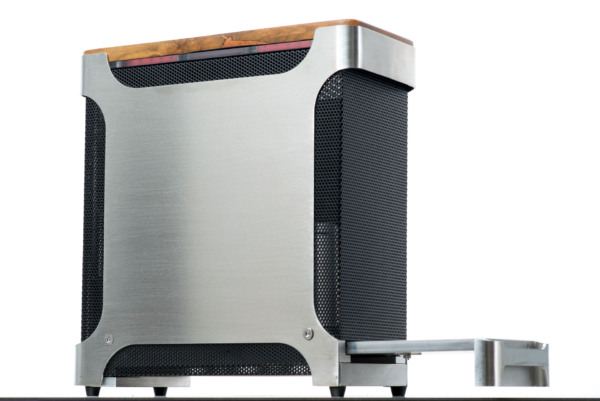We’ve just published our latest research!
Our new open-access article in Geochronometria presents the upgraded Helios OSL reader as a portable solution for luminescence dating and dosimetry applications. This study confirms that Helios delivers reliable results for on-site measurements and compares favorably with other leading portable systems.
THE HELIOS OSL READER: A PORTABLE SYSTEM FOR DATING AND DOSIMETRY APPLICATIONS
The OSL Helios reader is the instrument for measuring optically stimulated luminescence (OSL) that could be used in dosimetry of ionizing radiation (personal, environmental, medical, retrospective, accidental dosimetry) and optical dating (archeology and geology). Our innovative approach aims to simplify the reader construction together with increasing its measurement capability. This enables reduction of manufacturing costs and makes the instrument more versatile and user-friendly. The portable OSL Helios reader consists of several modules of which the most important are the modules of optical stimulation and detection.
Optical stimulation is performed by interchangeable modules consisting of LEDs and optical filters. A different configurations of the reader are possible, e.g. two types of LEDs (blue light, green light) mounted in the reader with the possibility of monochromatic or bichromatic stimulation. LEDs and filters are selected to suit the user’s needs. For example, the stimulation can be performed by green LEDs (peak at 520-532 nm) and Schott filters GG495 and OG515 to cut-off short-wave light component below 500 nm.
Detection of luminescence is made by a modified integrated photon counting module with quartz window, counter electronics and computer interface. Detection filters are used to separate stimulation and detection light. Most frequently, blue light emission (in the range 300-380 nm) is detected as OSL signal using Schott UG11 filters.
Dedicated software provides real-time luminescence readout capability under Microsoft Windows OS. The software provides the ability to perform luminescence measurements in photon counting mode using spectral and temporal separation.
The reader provides the stimulation using typical and new advanced methods including CW-OSL (continuous wave OSL), POSL (pulsed OSL), VD-OSL ( variable delay OSL), HM-OSL (harmonically modulated OSL) and many others. The reader operates in a few measurement modes: CW Spectrum, CW Time, BoxCar, Probe.
Examples of research performed using the OSL Helios reader
- Investigations of various OSL and TL phosphors for dosimetric purposes: commonly used salts (NaCl, KCl), natural minerals (halite, feldspars), building materials (ceramic insulators), standard OSL/TL detectors (Al2O3:C, LiF).
- Experimental and theoretical studies of luminescence kinetics for various phosphors
- Development of new methods of optical stimulation, e.g. harmonically modulated HM-OSL, variable delay VD-OSL
We offer the OSL Helios reader in several user specified configurations. In each version the user can specify the range of stimulation light by selecting appropriate LED wavelength and stimulation cut-off filters. The user can also specify detection band of the system by selecting the appropriate photon counting module and detection filter assembly. Three versions are available:
- Helios Basic – the fully functional, user-friendly instrument with one stimulation wavelength, easy to use software and the basic OSL measurement capabilities.
- Helios Ex – the high-level research instrument with two fully controlled stimulation sources, special photon counting electronics, advanced control and data handling. It offers unique performance and extended OSL/PL measurement capabilities.
- Helios C – the fully customized version for specific demands. The version created for conducting specific and non-standard measurements. It can be combined with far-reaching interference in the construction of the device. An example of the implementation of this type of devices that were made are: OSL Helios reader with radioluminescence (RL) measurement capabilities and the OSL Helios with lioluminescence measurement capabilities. Each order of this type is discussed and valued individually.
For dating purposes, we recommend the Helios Ex device featuring two types of stimulation: infrared and blue light. This configuration ensures optimal performance for luminescence dating. For more information, please refer to the publication above.
THE HELIOS OSL READER: A PORTABLE SYSTEM FOR DATING AND DOSIMETRY APPLICATIONS
Key points from the study:
- Portable OSL readers enable on-site luminescence screening, reducing the need for complex lab procedures.
- The Helios series has been upgraded for greater versatility, supporting both dating and dosimetry applications.
- Field tests on loess profiles show that Helios performs comparably to the SUERC reader, a widely used portable system.
- The device is suitable for measuring luminescence signals from bulk materials, not just purified mineral samples.
- Additional tests confirm its sensitivity for standard dosimeters and emergency detectors.

